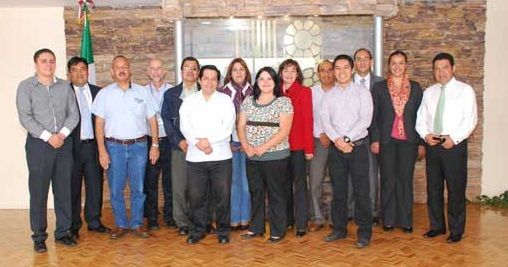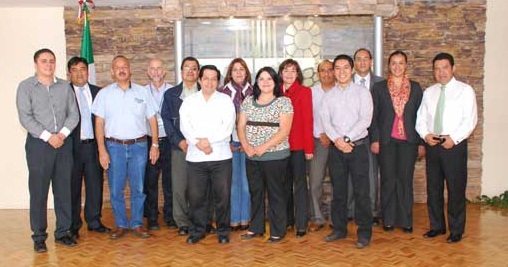New Borlaug Institute for South Asia fosters improved farming for food security
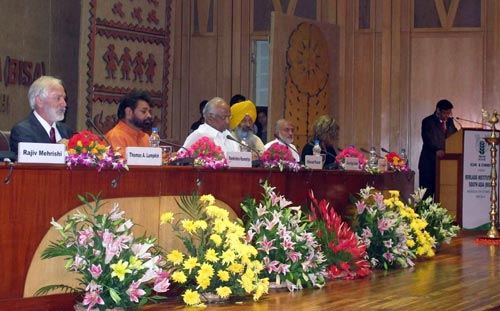 The Borlaug Institute for South Asia (BISA) was officially launched on Wednesday, 5 October 2011, at the A.P. Shinde Symposium Hall, NASC Complex in New Delhi, India.
The Borlaug Institute for South Asia (BISA) was officially launched on Wednesday, 5 October 2011, at the A.P. Shinde Symposium Hall, NASC Complex in New Delhi, India.
The event commenced with a welcome by the Secretary, Department of Agricultural Research and Education (DARE) and Director General of the Indian Council of Agricultural Research (ICAR), Dr. S. Ayyappan. The Agriculture Minister of Madhya Pradesh, Ramkrishna Kusmaria; Punjab Agriculture Minister, S. Sucha Singh Langah; and the Union Minister for Agriculture and Food Processing Industry, Sharad Pawar, accompanied by Pratibha Pawar, delivered speeches at the event. Also in attendance was Mr. Rajiv Mehrishi, Secretary of ICAR.
The three agricultural ministers of the states that will be hosting BISA facilities delivered speeches in recognition of the important role which BISA will play in improving food security not only in their own states, but throughout the whole of South Asia. Mr. Pawar highlighted the concerns of population growth both globally and especially in South Asia, in addition to rising food prices and unrest caused by food insecurity. He stated that “it would not be an overstatement to say that Norman Borlaug is a household name in India.” On a personal level, he also recalled his interaction with Dr. Borlaug in India in the 1960s.
BISA will have centers in Ludhiana in Punjab, Pusa in Bihar, and Jabalpur in Madhya Pradesh. Each of the states contains varied agro-ecological zones allowing for testing a variety of maize and wheat cultivars suited to the equally varied environments of South Asia.
Dr. Thomas Lumpkin, CIMMYT Director General, delivered the closing remarks, reminding the audience of the challenges of global food security as well as the humanitarian crisis in the Horn of Africa. He also highlighted the support of the Mexican government and CIMMYT’s role in facilitating and promoting cooperation through its centers in India, Mexico, and Africa. Dr. Lumpkin concluded his speech stating that “CIMMYT has been in India for 50 years. It’s time we laid down some roots.”
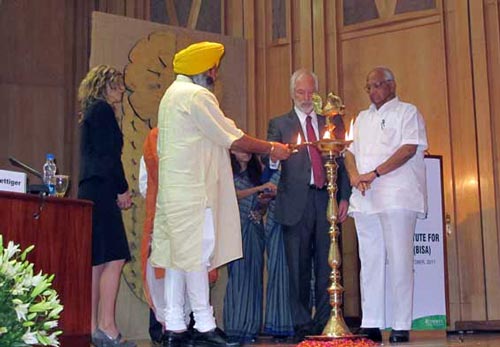 The official opening ceremony was marked by a cultural event featuring classical Indian dancing including choreographical styles from all three states. In addition to CIMMYT-India staff and speakers, also present at the launching ceremony were the management committee of CIMMYT and its Board of Trustees. The launching ceremony was attended by representatives from CIMMYT’s sister institutions ILRI, IRRI, ICARDA, and Bioversity, as well as by the Allan Mustard Institute of the US Dept. of Agriculture and the private sector. The event was closed by a dinner and a speech by the Board of Trustees Chair, Sara Boettiger.
The official opening ceremony was marked by a cultural event featuring classical Indian dancing including choreographical styles from all three states. In addition to CIMMYT-India staff and speakers, also present at the launching ceremony were the management committee of CIMMYT and its Board of Trustees. The launching ceremony was attended by representatives from CIMMYT’s sister institutions ILRI, IRRI, ICARDA, and Bioversity, as well as by the Allan Mustard Institute of the US Dept. of Agriculture and the private sector. The event was closed by a dinner and a speech by the Board of Trustees Chair, Sara Boettiger.
BISA was officially approved by India’s Union Cabinet, based on a proposal by the Ministry of Agriculture, Department of Agricultural Research and Education on 30 September. In a press release issued by the government of India, the approval of BISA is described as follows: “The establishment of BISA in India will enable India to harness the best of international science, in meeting food security challenges. India would be able to rapidly and effectively absorb the research output of BISA thus benefiting farmers of the country.”
The Borlaug Institute of South Asia was conferred international status as detailed in clause 3 of the United Nations (Privileges and Immunities) Act of 1947. The Department of Agricultural Research and Education (DARE), on behalf of the government of India, will be authorized in all matters regarding the establishment of the institute.
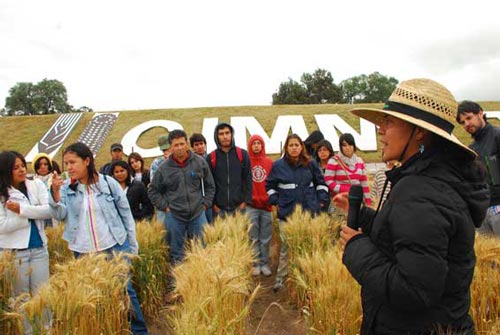 Carlos Alonso Hernández Castro, an agronomy student at the Autonomous Metropolitan University of Xochimilco, described the visit as “enriching”. “I’ve learned how people work in teams which combine field and laboratory work,” he said. Some students were affected on a more personal level, such as Cristina Ortega González, a biotechnology student at Xicotepec Technological University of Juárez, Puebla. Before the visit, she says she knew nothing of CIMMYT’s work, but the event has inspired her in her studies and she now hopes to conduct an internship with CIMMYT. Coming from a farming family, and seeing the work done at CIMMYT, González said she’s “now more convinced that I’m on the right way to contribute my bit of effort to help my family and others, if possible, to improve their lives.”
Carlos Alonso Hernández Castro, an agronomy student at the Autonomous Metropolitan University of Xochimilco, described the visit as “enriching”. “I’ve learned how people work in teams which combine field and laboratory work,” he said. Some students were affected on a more personal level, such as Cristina Ortega González, a biotechnology student at Xicotepec Technological University of Juárez, Puebla. Before the visit, she says she knew nothing of CIMMYT’s work, but the event has inspired her in her studies and she now hopes to conduct an internship with CIMMYT. Coming from a farming family, and seeing the work done at CIMMYT, González said she’s “now more convinced that I’m on the right way to contribute my bit of effort to help my family and others, if possible, to improve their lives.”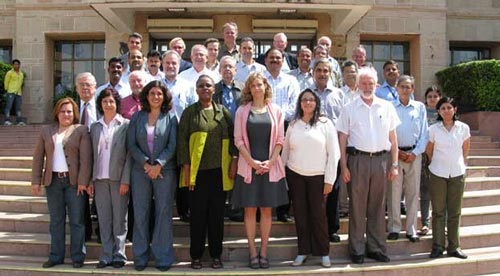
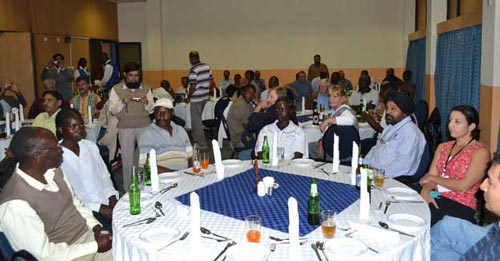 Colleagues from CIMMYT, the International Centre for Agricultural Research in the Dry Areas (ICARDA), and national agricultural research systems gathered in Njoro, Kenya, on 05 October 2011, to celebrate the approval of BISA (Borlaug Institute for South Asia) by the Indian Government. The event was organized by Sridhar Bhavani, CIMMYT-Kenya. Ravi Singh, CIMMYT-Mexico, gave the opening address to more than 40 international scientists and thanked the Government of India for funding the institute. He described the significance of the new centre in relation to the growing challenges of food security, and expressed confidence that this centre will address the expectations of a second Green Revolution in South Asia and worldwide.
Colleagues from CIMMYT, the International Centre for Agricultural Research in the Dry Areas (ICARDA), and national agricultural research systems gathered in Njoro, Kenya, on 05 October 2011, to celebrate the approval of BISA (Borlaug Institute for South Asia) by the Indian Government. The event was organized by Sridhar Bhavani, CIMMYT-Kenya. Ravi Singh, CIMMYT-Mexico, gave the opening address to more than 40 international scientists and thanked the Government of India for funding the institute. He described the significance of the new centre in relation to the growing challenges of food security, and expressed confidence that this centre will address the expectations of a second Green Revolution in South Asia and worldwide.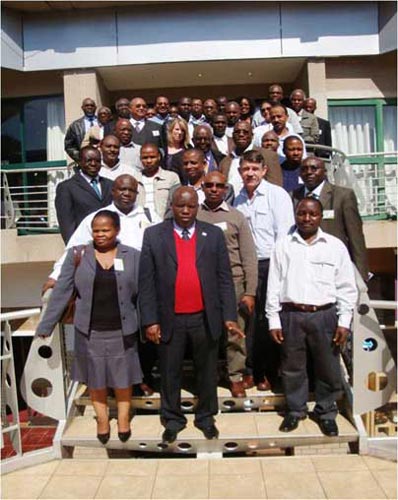 Edison Wotho, Deputy Permanent Secretary, Ministry of Agriculture, Botswana, praised Botswana’s participation in NSIMA, whose products for that country’s farmers include a new drought tolerant maize hybrid (CZH0623) and three OPVs (ZM309, ZM401 and ZM523). “The projects come at the right time,” said Wotho. “The region is experiencing frequent droughts and food shortages.”
Edison Wotho, Deputy Permanent Secretary, Ministry of Agriculture, Botswana, praised Botswana’s participation in NSIMA, whose products for that country’s farmers include a new drought tolerant maize hybrid (CZH0623) and three OPVs (ZM309, ZM401 and ZM523). “The projects come at the right time,” said Wotho. “The region is experiencing frequent droughts and food shortages.”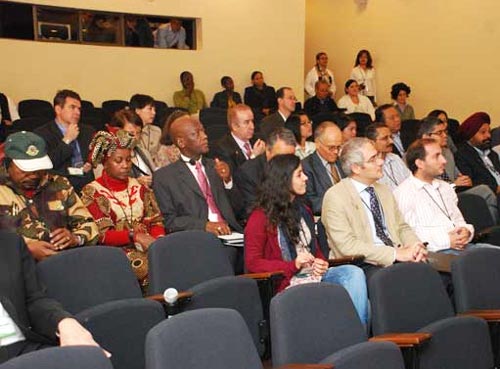 With diplomatic representatives from 15 countries in attendance, the event was designed to raise awareness and foster discussion on partnerships to secure global food security through agricultural research, an issue at the forefront of recent G20 talks in France. Musalem highlighted the Sustainable Modernization of Traditional Agriculture (MasAgro) initiative—implemented by SAGARPA and CIMMYT with myriad national, regional, and local organizations, both public and private—as an innovative model.
With diplomatic representatives from 15 countries in attendance, the event was designed to raise awareness and foster discussion on partnerships to secure global food security through agricultural research, an issue at the forefront of recent G20 talks in France. Musalem highlighted the Sustainable Modernization of Traditional Agriculture (MasAgro) initiative—implemented by SAGARPA and CIMMYT with myriad national, regional, and local organizations, both public and private—as an innovative model.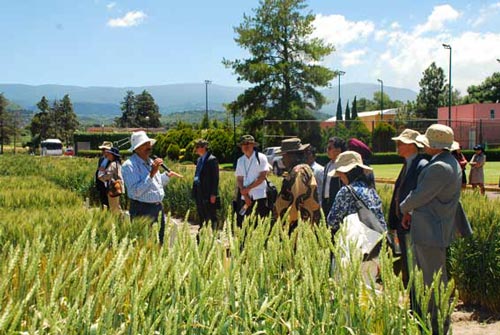 As part of the event, the visitors toured the Wellhausen-Anderson Plant Genetic Resources Center with Thomas Payne and enjoyed a presentation on wheat’s wild relatives by David Bonnet. At the long-term conservation agriculture trial plot, Bram Govaerts described current efforts to test and promote CA practices among thousands of Mexican farmers. The group saw new maize and wheat varieties and learned in more detail about the work CIMMYT and its partners are doing on these crops, in field presentations by Félix San Vicente, Natalia Palacios, José Luis Torres, Marc Rojas, and Ravi Singh.
As part of the event, the visitors toured the Wellhausen-Anderson Plant Genetic Resources Center with Thomas Payne and enjoyed a presentation on wheat’s wild relatives by David Bonnet. At the long-term conservation agriculture trial plot, Bram Govaerts described current efforts to test and promote CA practices among thousands of Mexican farmers. The group saw new maize and wheat varieties and learned in more detail about the work CIMMYT and its partners are doing on these crops, in field presentations by Félix San Vicente, Natalia Palacios, José Luis Torres, Marc Rojas, and Ravi Singh.